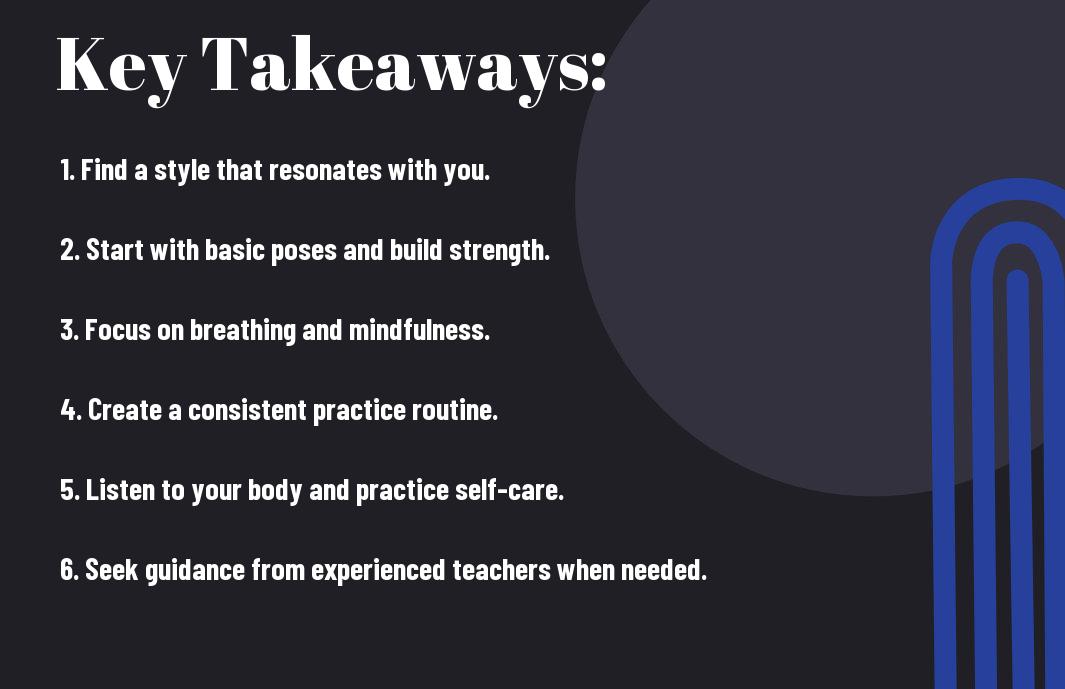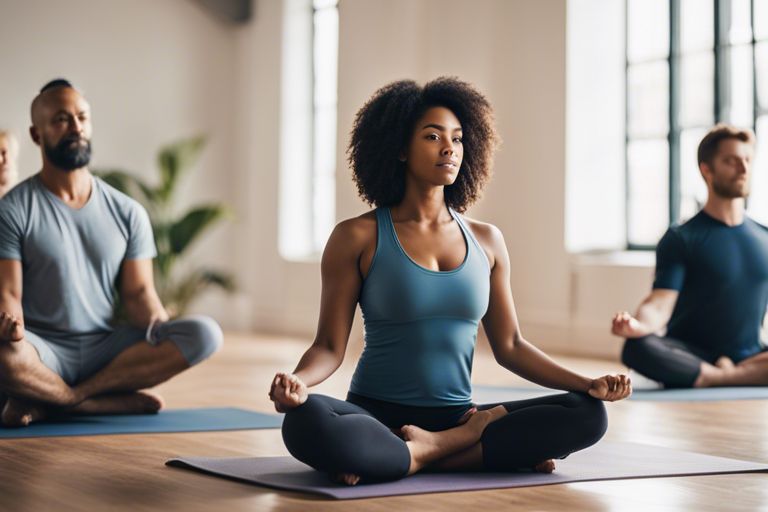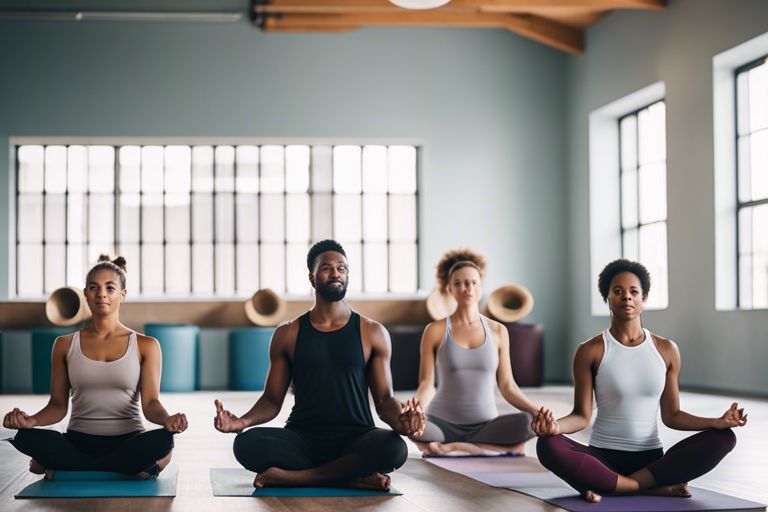There’s no better time than now to start your yoga journey! Whether you’re looking to improve flexibility, reduce stress, or enhance your overall well-being, yoga offers a multitude of physical and mental benefits for beginners. In this complete beginner’s guide, we will explore everything you need to know to kickstart your practice, from finding the right style of yoga for you to mastering basic poses and establishing a regular routine. Get ready to roll out your mat and begin on a transformative journey towards a healthier and more balanced life through the practice of yoga.
Key Takeaways:
- Start slowly: As a beginner, it’s important to ease into your yoga practice to prevent injury and build a strong foundation.
- Focus on your breath: Breathing techniques are imperative in yoga practice to help you stay present and connected to your body.
- Be patient and consistent: Progress in yoga takes time, so be patient with yourself and make a commitment to practicing regularly to see improvement.

Understanding Yoga Fundamentals
While commenceing on your yoga journey as a complete beginner, it is necessary to grasp the core fundamentals of this ancient practice. Understanding the basic principles and concepts of yoga will not only enhance your practice but also deepen your connection with the mind, body, and spirit.
The Origins and Philosophy of Yoga
With roots dating back thousands of years in ancient India, yoga is much more than a physical exercise. It is a holistic practice that aims to unite the mind, body, and spirit. The philosophy of yoga revolves around principles such as self-discipline, self-awareness, compassion, and mindfulness. By incorporating these teachings into your practice, you can cultivate a sense of inner peace, balance, and harmony.
Yoga draws inspiration from various ancient texts like the Yoga Sutras of Patanjali and the Bhagavad Gita, outlining the ethical and moral guidelines for living a meaningful and purposeful life. These foundational teachings provide a framework for personal growth and spiritual transformation, guiding practitioners towards self-realization and enlightenment.
Different Styles of Yoga: Finding the Right Fit
Fundamentally, understanding the different styles of yoga is crucial in finding the practice that best suits your needs and preferences. From vigorous and dynamic styles like Ashtanga and Vinyasa to gentle and restorative practices like Yin and Hatha yoga, each style offers unique benefits and caters to different levels of practitioners.
Styles of yoga can vary in terms of pace, intensity, focus, and sequence of poses. Some styles may emphasize alignment and precision, while others may focus on breathwork and meditation. Exploring various styles of yoga can help you discover what resonates with you the most, allowing you to create a personalized practice that aligns with your goals and aspirations.
Preparing for Your Yoga Practice
Creating the Perfect Yoga Environment
Practice yoga in a space that fosters relaxation and focus. Choose a quiet room with natural light if possible. Clear the area of any clutter to create a sense of openness. Consider adding elements like candles, incense, or calming music to enhance the ambiance.
Invest in a quality yoga mat to provide stability and comfort during your practice. You may also want to add props such as blocks, straps, and bolsters to support your poses and deepen stretches. Creating a dedicated space for your practice can help cultivate a sense of routine and mindfulness.
Essential Yoga Gear for Beginners
Practice yoga in comfortable, breathable clothing that allows for ease of movement. A reliable water bottle is an important accessory to stay hydrated throughout your practice. Additionally, a towel can be useful for wiping away sweat and providing extra grip on your mat.
Any additional gear such as yoga socks or gloves can enhance your practice, but are not required for beginners. Focus on building a strong foundation with the basics before exploring more advanced equipment. Be mindful of, the most important thing is your commitment to showing up on your mat each day.
Practical Guidance for Your First Sessions
Embarking on your yoga journey can be both exciting and intimidating, especially for beginners. To help ease your transition into this ancient practice, here is some practical guidance to ensure your first yoga sessions are enjoyable and beneficial.
Basic Yoga Poses and How to Master Them
Practical mastery of basic yoga poses is imperative for any beginner looking to establish a strong foundation in their practice. Start with foundational poses like Mountain Pose, Downward-Facing Dog, and Child’s Pose. Focus on proper alignment, breathing, and mindfulness in each pose to gradually build strength and flexibility. Keep in mind, it’s okay to modify poses to suit your body’s needs and avoid any strain or injury.
As you progress, consider taking beginner-friendly classes or watching online tutorials to deepen your understanding of each pose. Consistent practice and patience are key to mastering basic poses and laying the groundwork for more advanced sequences in the future.
Breathing Techniques and Their Importance in Yoga
Yoga places a strong emphasis on the connection between breath and movement, making breathwork an integral part of your practice. Pranayama, or yogic breathing techniques, not only help you stay focused and present on the mat but also promote relaxation and stress relief. Begin by practicing diaphragmatic breathing and gradually explore other techniques like Ujjayi breath and alternate nostril breathing.
Yoga encourages conscious breathing as a way to enhance the mind-body connection and cultivate inner awareness. Incorporating breathwork into your practice can help you navigate challenging poses with ease, release tension, and enter a more meditative state during relaxation. Embrace the power of your breath as a tool to deepen your yoga practice and overall well-being.
Guidance: It’s important to prioritize proper breathing techniques in your yoga practice from the beginning. By integrating breathwork into your sessions, you can enhance the physical, mental, and emotional benefits of your practice and experience a deeper sense of harmony within.
Cultivating a Yoga Routine
After deciding to start your yoga journey, the next step is to cultivate a yoga routine that fits seamlessly into your daily life. Consistency is key when it comes to reaping the full benefits of yoga practice. By establishing a regular routine, you can gradually build strength, flexibility, and mindfulness.
Integrating Yoga into Your Daily Life
Integrating yoga into your daily life is imperative to make it a sustainable habit. Start by setting aside a specific time each day for your practice. Whether it’s early morning before work, during your lunch break, or in the evening before bed, find a time that works best for you. Creating a designated space for your practice can also help signal to your brain that it’s time to unwind and focus on your yoga practice.
Consider integrating shorter yoga sessions into your day if you’re pressed for time. Even a 10-minute practice can be beneficial in maintaining consistency and reaping the mental and physical rewards of yoga. Be patient with yourself as you establish your routine, and remember that progress takes time.
Tips for Staying Motivated and Consistent
Staying motivated and consistent with your yoga practice can be challenging, especially when life gets busy. To help you stay on track, consider the following tips:
- Set realistic goals and track your progress regularly.
- Find a yoga buddy or join a yoga community for support and accountability.
- Mix up your routine with different styles of yoga to keep things interesting.
Motivated individuals tend to succeed in establishing a consistent yoga practice. By staying committed to your goals and finding joy in your practice, you can overcome obstacles and stay on track with your yoga journey. Assume that there will be days when you feel unmotivated, but use that as an opportunity to reconnect with your intention and recommit to your practice.
Plus, remember that consistency is more important than intensity. It’s better to practice for a few minutes every day than to push yourself to the limit once a week. By incorporating yoga into your daily routine and staying motivated, you can experience the transformative power of this ancient practice.

Expanding Your Yoga Knowledge
All beginners on the yoga journey find themselves at a crucial point where they begin to explore deeper into the practice to enhance their understanding. This phase is about expanding your yoga knowledge beyond the physical poses and embracing the holistic approach that yoga offers for overall well-being.
Exploring Meditation and Mindfulness through Yoga
Yoga is not just about the physical postures; it also encompasses the practices of meditation and mindfulness. Meditation allows you to quiet the mind and turn inward, cultivating a sense of inner peace and clarity. Mindfulness, on the other hand, involves being fully present in the moment during your practice, enhancing your awareness and connection to the mind-body-spirit union.
On your yoga journey, exploring meditation and mindfulness can help you deepen your practice and bring a sense of calm and mindfulness into your daily life. These practices not only complement the physical aspect of yoga but also offer profound benefits for your mental and emotional well-being.
Nutrition and Yoga: Fueling Your Practice
On your journey to expand your yoga knowledge, understanding the role of nutrition in fueling your practice is imperative. The food you consume directly impacts your energy levels, focus, and overall well-being, making it crucial to nourish your body with wholesome foods that support your yoga practice.
With a balanced diet rich in fresh fruits, vegetables, whole grains, and lean proteins, you can enhance your physical performance on the mat and promote a sense of vitality and wellness in your everyday life.
Summing up
Embarking on Your Yoga Journey – A Complete Beginner’s Guide has provided you with a solid foundation to start your yoga practice. From understanding the different types of yoga to learning basic poses and breathing techniques, you now have the tools to begin your journey towards physical and mental well-being through yoga. Remember to listen to your body, practice consistently, and be patient with yourself as you progress on this path of self-discovery and growth. Namaste.
FAQ
Q: What is yoga?
A: Yoga is a mind and body practice with origins in ancient Indian philosophy. It combines physical postures, breathing exercises, meditation, and ethical principles to help achieve overall wellness.
Q: Why should I start practicing yoga?
A: Practicing yoga has numerous benefits, including improved flexibility, strength, posture, and mental clarity. It can also help reduce stress, anxiety, and improve overall well-being.
Q: I’m a complete beginner, where should I start my yoga journey?
A: As a beginner, it’s best to start with beginner-friendly classes or online tutorials that focus on foundational poses and basic breathing techniques. This will help you build a strong yoga practice from the ground up.
Q: How often should I practice yoga as a beginner?
A: For beginners, it’s recommended to start with 2-3 yoga sessions per week to allow your body to adapt to the practice. As you progress, you can gradually increase the frequency to daily practice or as often as your schedule allows.
Q: What do I need to start practicing yoga?
A: To start practicing yoga, you’ll need a yoga mat, comfortable clothing that allows for easy movement, and an open mind. As you progress, you may want to explore props such as blocks, straps, and bolsters to support your practice.

